Food is becoming an increasingly explored area among designers. Aiming to tackle mindless food consumption when we eat on-the-go barely minding not only the taste but even the size of the portions, they develop tableware that is designed to restore our connection to food and change our eating habits.
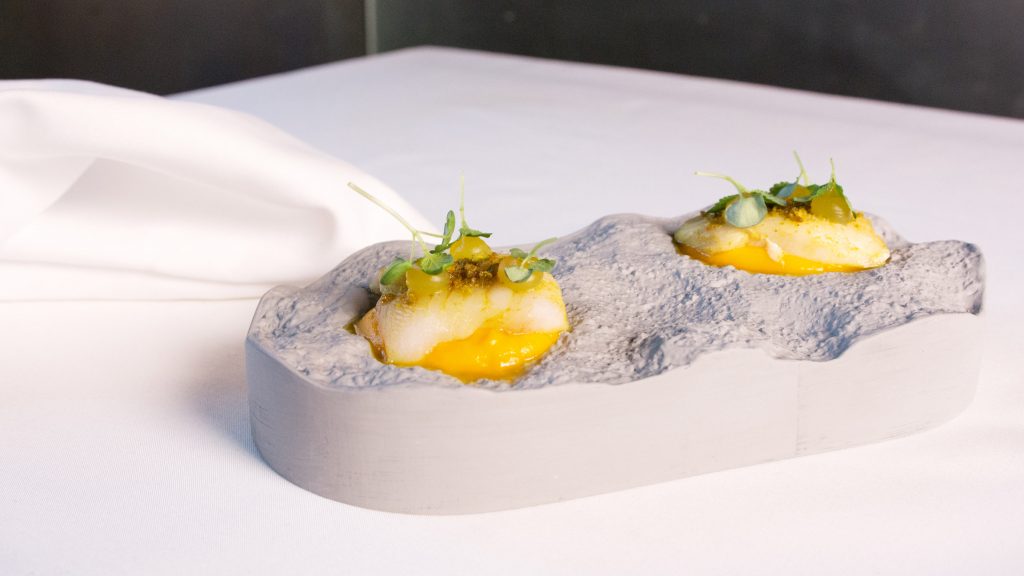
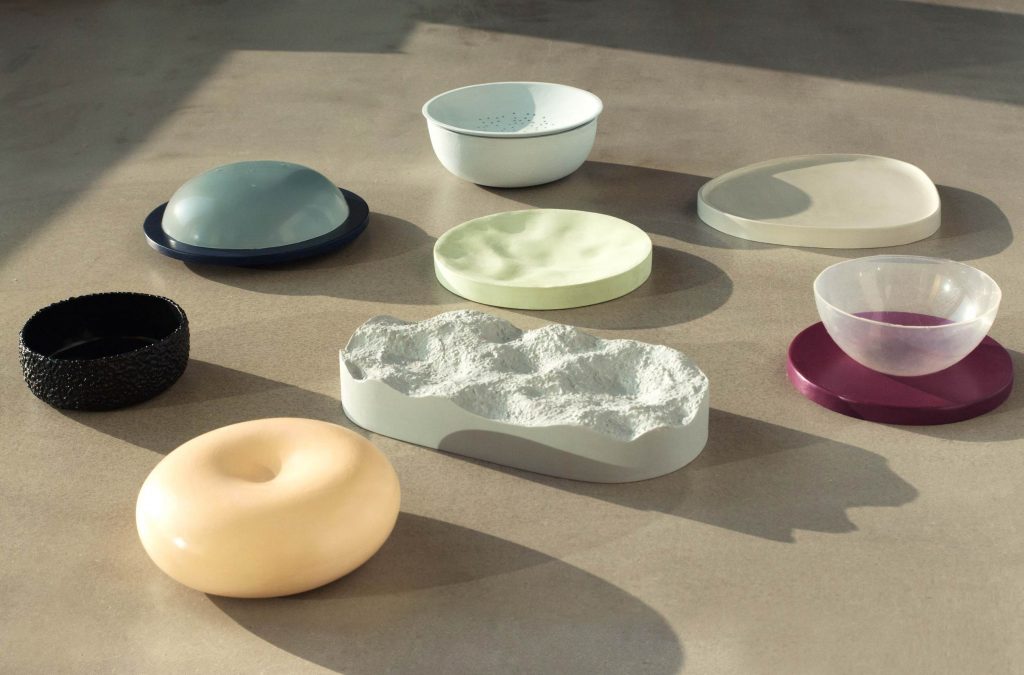
Beyond Taste by Teresa Berger (also header image)
Design Academy Eindhoven graduate Teresa Berger has created a eight-piece series based on the findings of a new scientific field called Gastrophysics that applies principles from neuroscience, physics and chemistry to understand the connection between the worlds of gastronomy and cooking. According to Gastrophysics, eating is not just about the taste, but about the interplay of all senses.
Making the theories of Gastrophysics more tangible, Berger’s Beyond Taste project focuses on how dining pieces of various shapes, colors, textures and other sensory stimulations can influence our eating experience. The multi-sensory tableware combines a classic stoneware base with unexpected elements like uneven, textured surfaces to facilitate touch, silicone accessories that enhance smell, and speakers to deliver “sonic seasoning”.
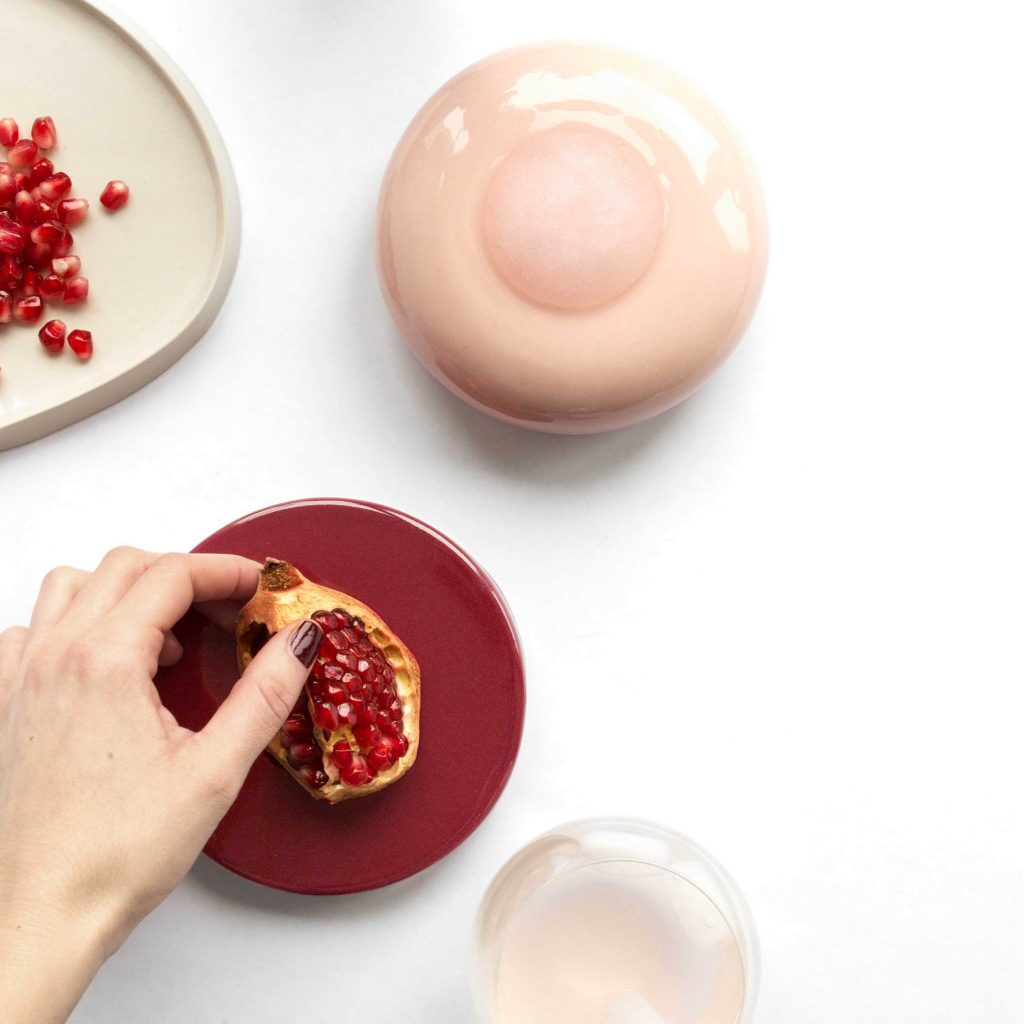
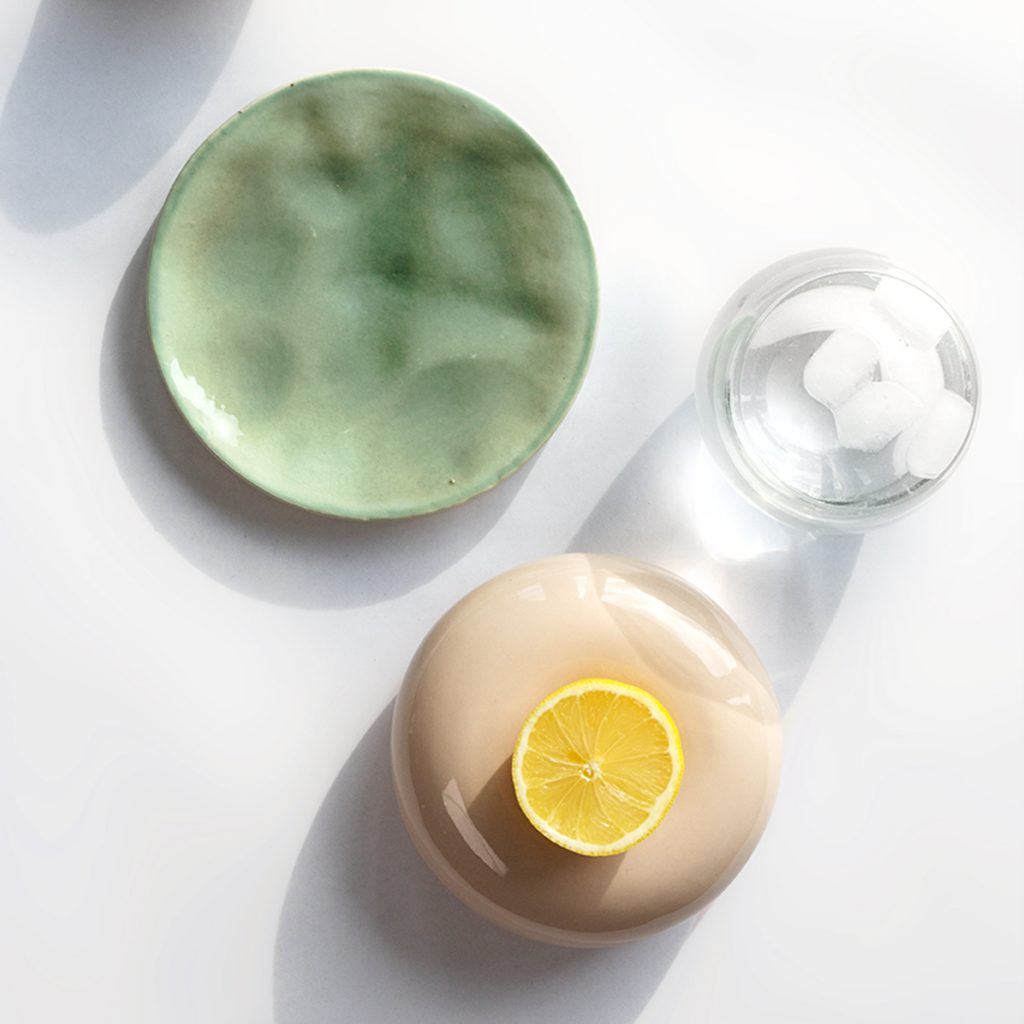
Beyond Taste by Teresa Berger
Called Sound Donut, a soft-pink ceramic dessert plate features an integrated Bluetooth speaker encased in a 3D-printed rubber capsule. It plays ambient sounds with particular frequencies and pitches which, according to a study from the University of Oxford, can affect the levels of sweetness and bitterness perceived by the eater.
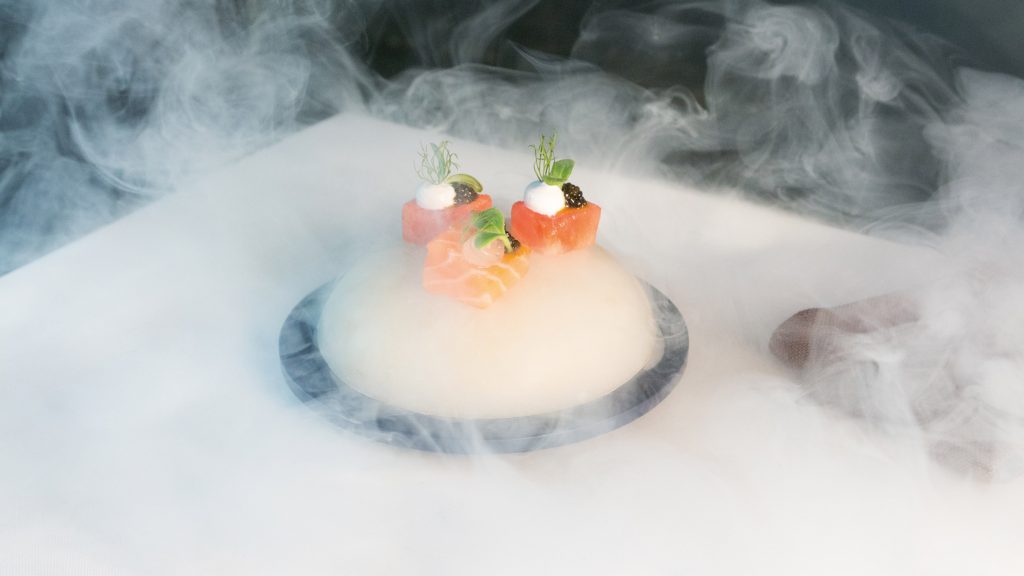
Beyond Taste by Teresa Berger
The Dancing Bowl includes a translucent silicone hemisphere that enables a playful interaction with soft foods. Placed within a dent in the accompanying plate, they start to jiggle when touched with a spoon. In the Smoke Dome plate, the similar silicone hemisphere is used to form a dome that captures the plumes created in the making of smoked dishes, and makes them visible at the table.
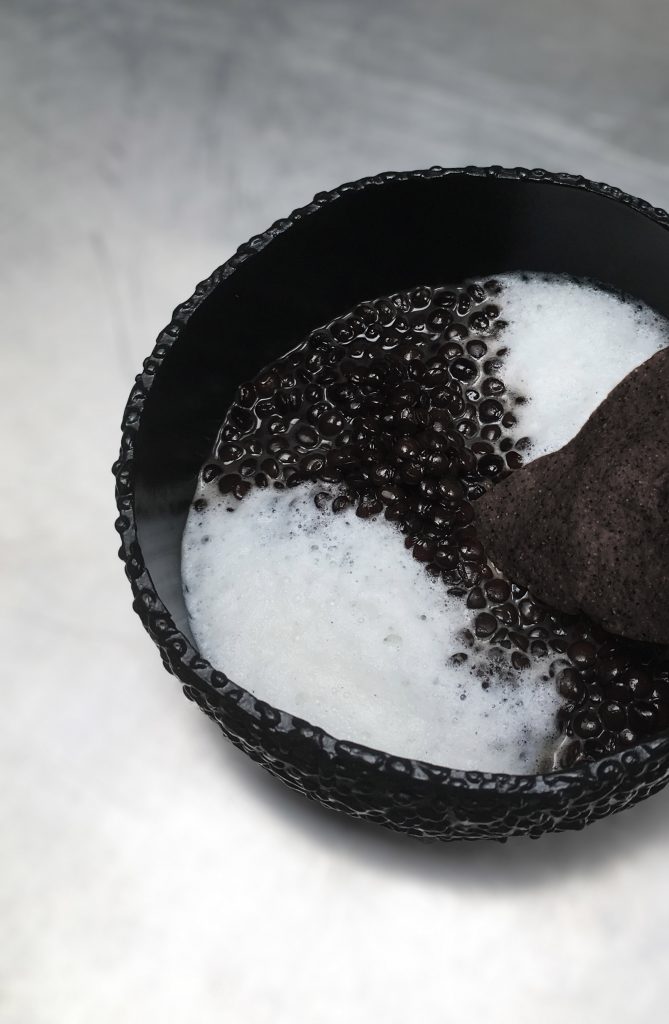
Beyond Taste by Teresa Berger
The Dripping Dish consists of a strainer that gradually releases liquid into the bowl underneath, while the pebbled Caviar Bowl recreates a tactile impression of the foods it is designed for, such as caviar or lentils.
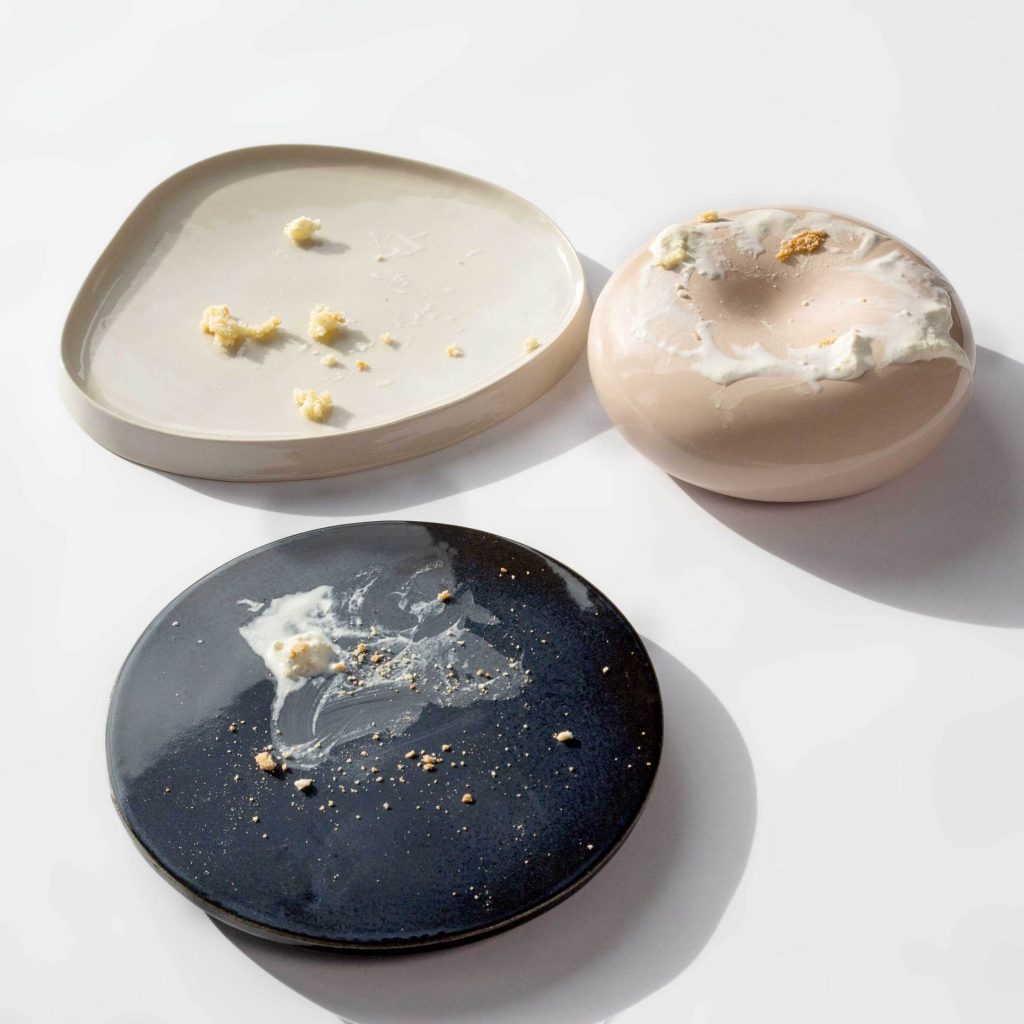
Beyond Taste by Teresa Berger
With its curved edges designed to hold saucy dishes, the Organic Motion plate facilitates the Italian ritual of “fare la scarpetta” in which a piece of bread is used to mop up the remnants food that are too delicious to waste.
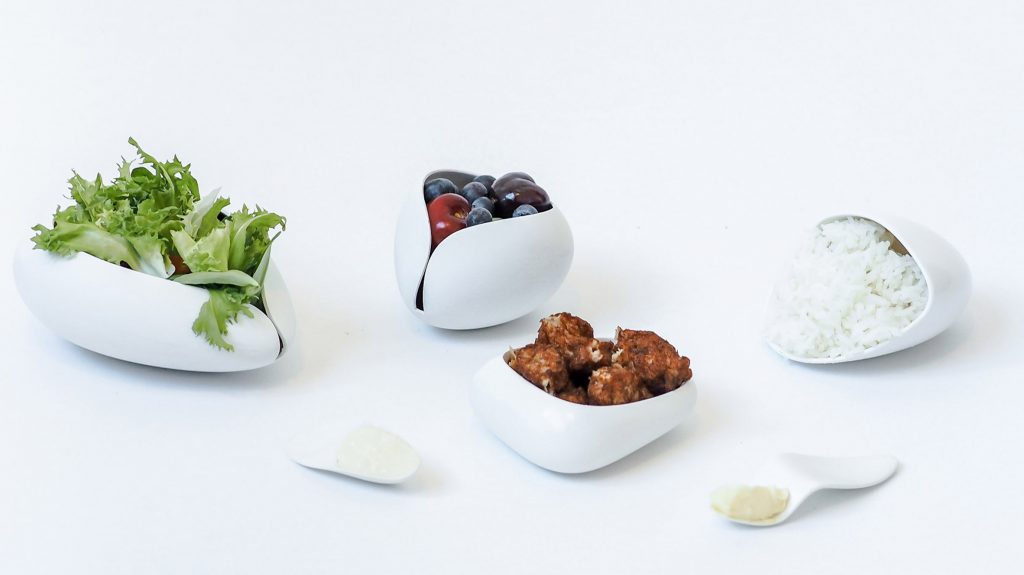
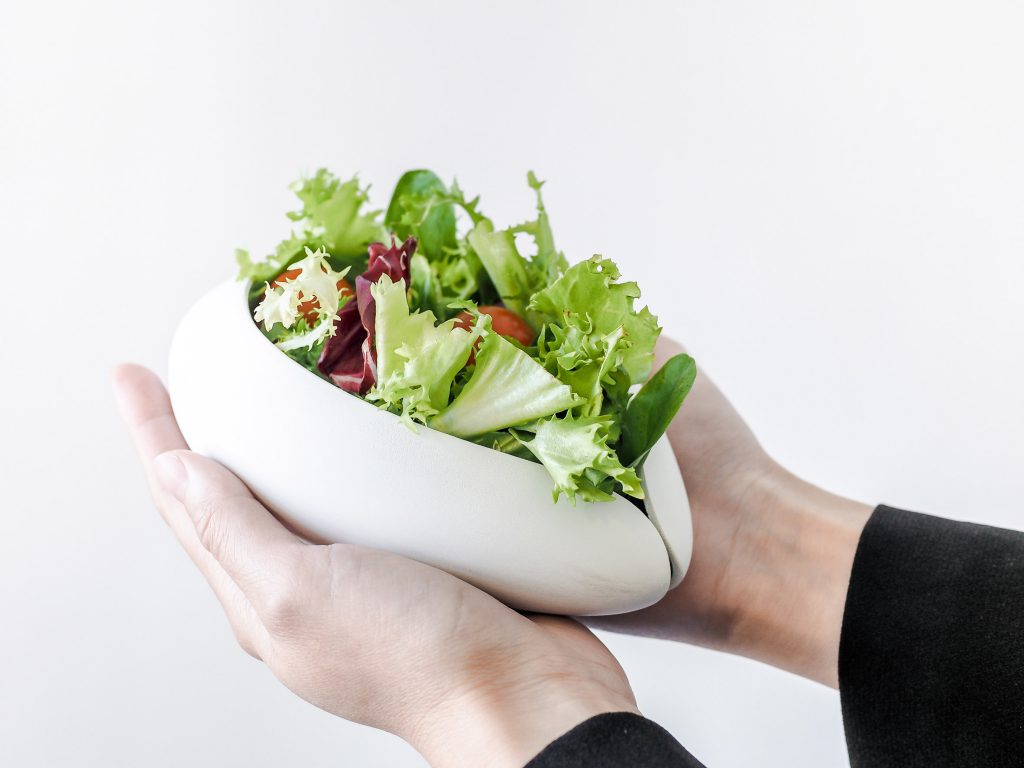
The New Normal by Ponsawan (Mo) Vuthisatkul
Ponsawan (Mo) Vuthisatkul, a former interior architect from Bangkok and Royal College of Art graduate, has created a series of food serving tools that are designed to fight obesity caused by the growing size of portions. Called The New Normal, the project uses the idea from nutritionists that we can easily compare food portion with the individual hand size: e.g. a fist of rice, a palm of beef burger, a thumb of butter, two hands of salad etc. Conceived as an alternative to traditional methods like calorie counting, the tools help people estimate five basic food groups and then form healthy eating habits in long-term.
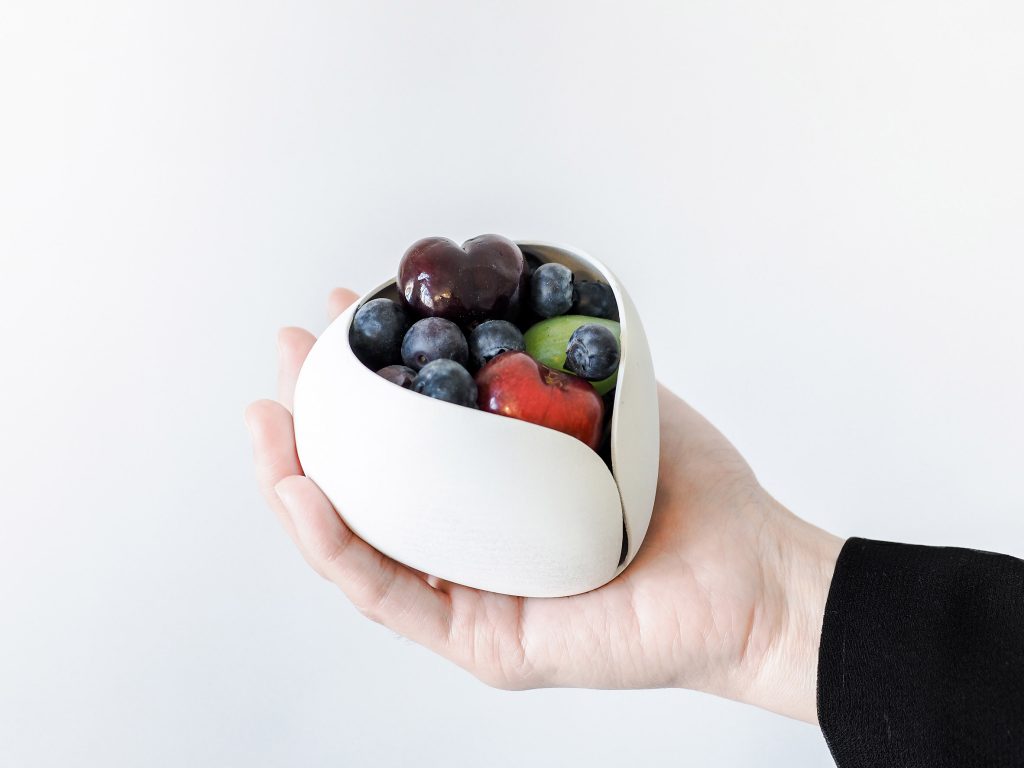
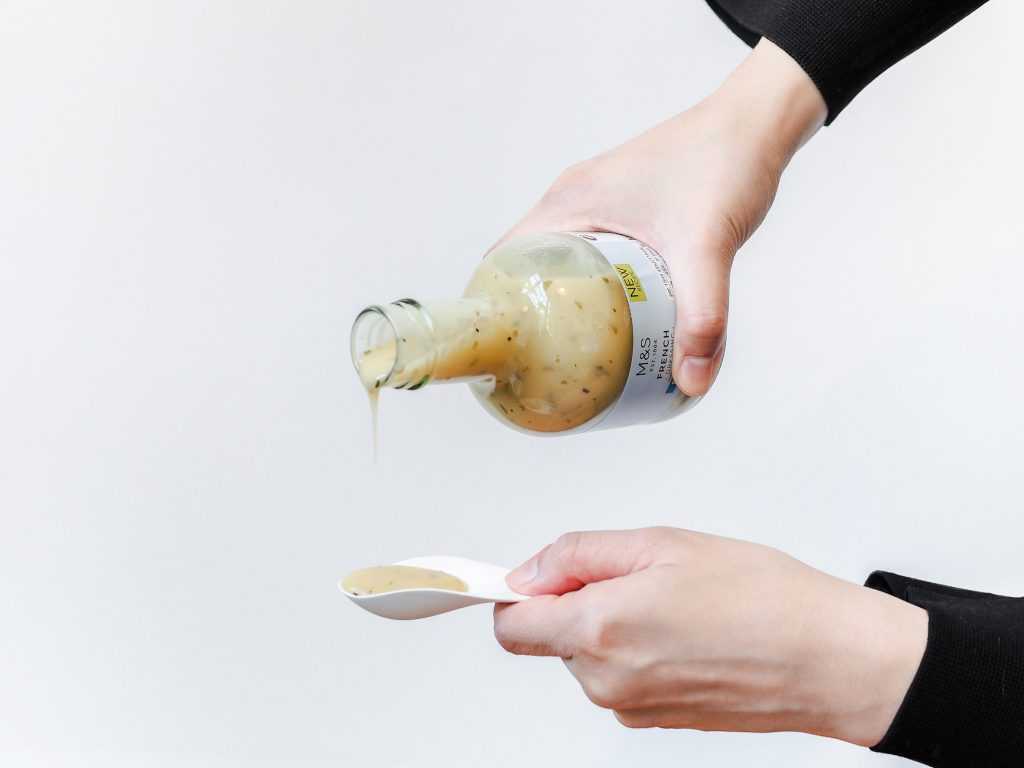
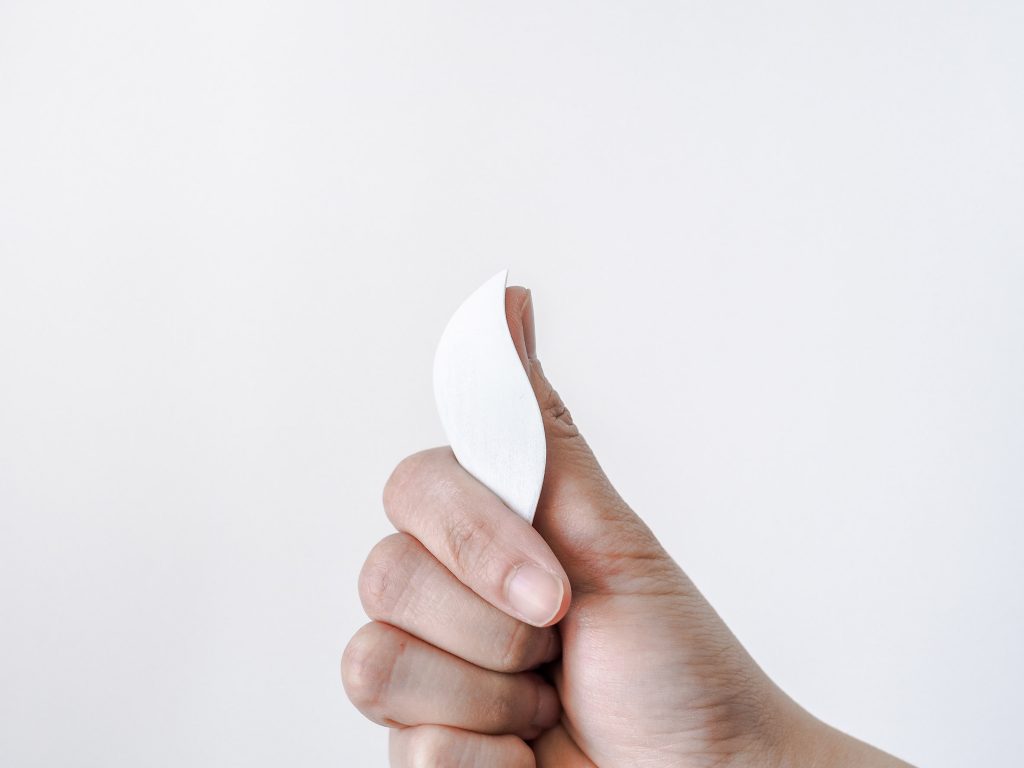
The New Normal by Ponsawan (Mo) Vuthisatkul
Similar to clothes sizing, the collection features six serving utensils of varying sizes; two extra small, a small, medium, large, and extra large, so that the eater can choose the appropriate tool for themselves. Besides, according to Vuthisatkul, each of the four bowls in the collection is designed to correspond to a different hand form that can be used to hold the item.
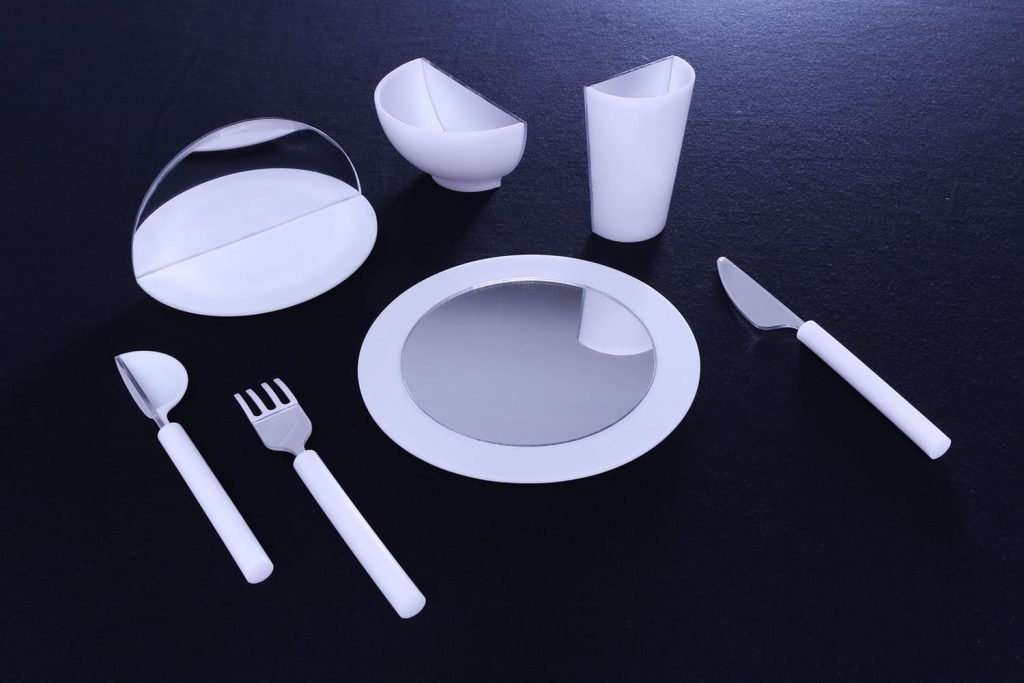
Half/Full by Studio Playfool
Other Royal College of Art graduates, Saki Maruyama and Daniel Coppen collectively known as Studio Playfool, have suggested another way to reduce food consumption. Their Half/Full collection encompasses a series of mirrored tableware that visually multiplies the portion tricking the eater’s perception of fullness and in turn reducing the amount they need to eat. Each piece in the set – which includes two plates, a cup, a bowl, and a knife, fork and spoon – features a reflective surface.
When developing their design, the studio looked to research conducted by the University of Toyko regarding appetite and eating habits that revealed that the apparent volume of food can influence one’s satisfaction from a meal: if the quantity of the food appears greater, the feeling of satisfaction is greater too. Correspondingly, Half/Full tableware increases the user’s satisfaction while enabling them to consume less.
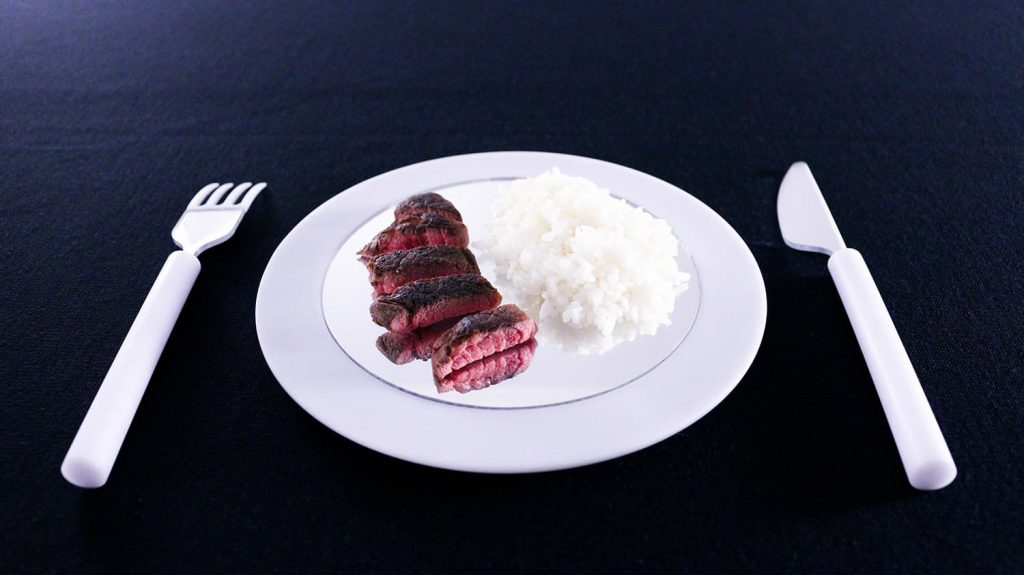
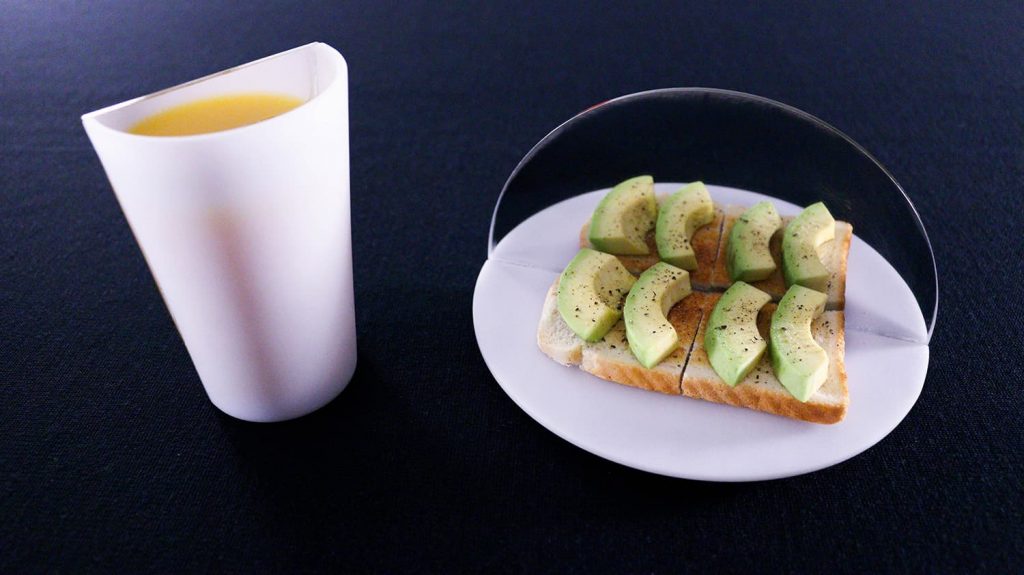
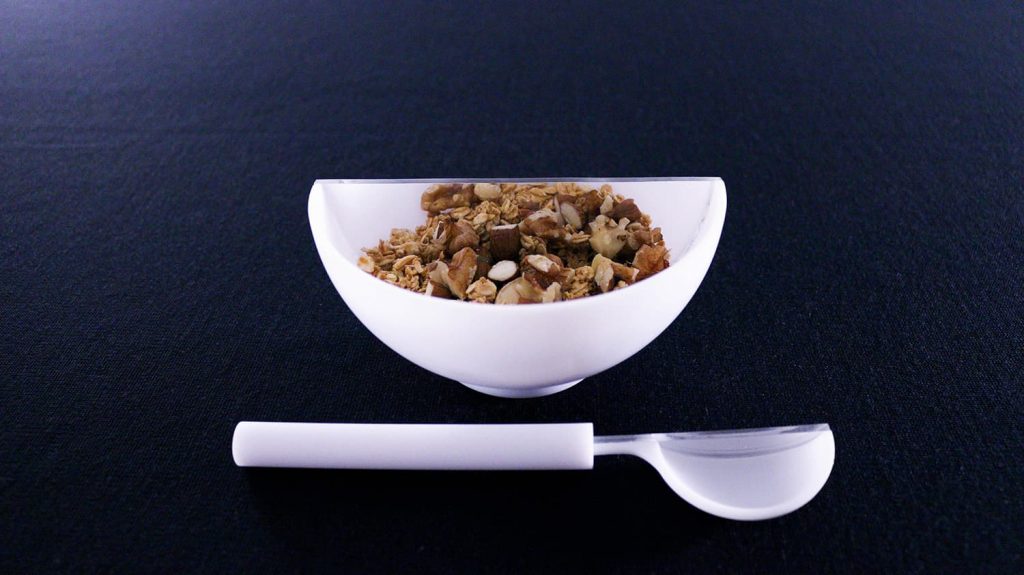
Half/Full by Studio Playfool
According to the designers, the project is a simple and playful approach that has the potential to change our eating habits for the better, while acting as a visual probe that raises our awareness around the impacts that climate change will have on our food and eating culture.